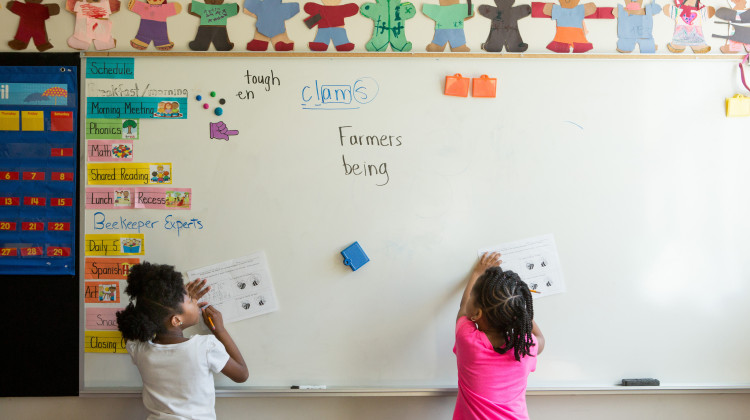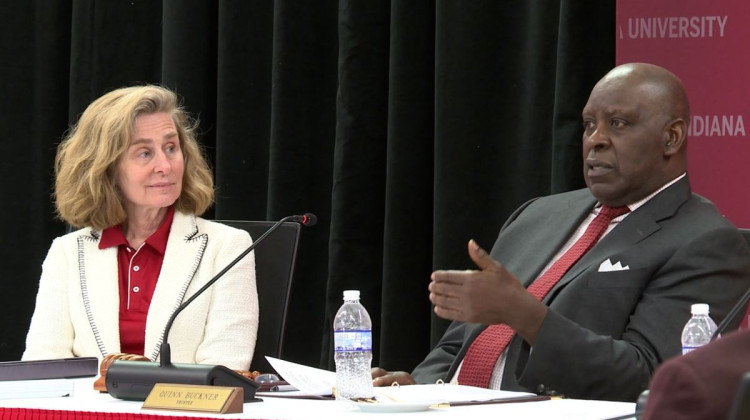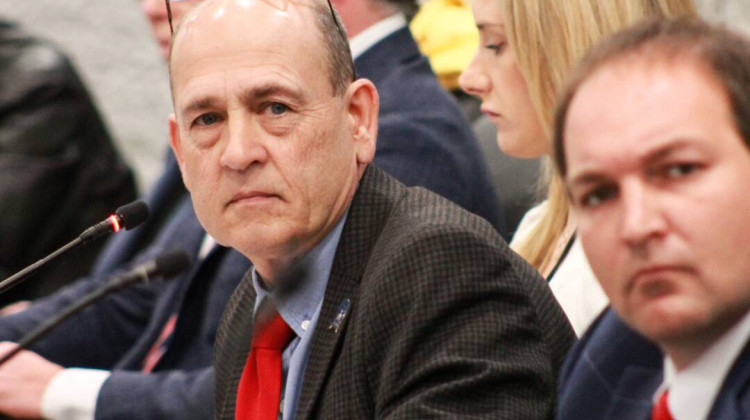The proposed K-12 funding plan in Indiana’s next two-year state budget adds $378 million. That includes an increase in base per student funding -- 1.25% during the first year and 2.5% in the second year.
Even though overall funding may increase following a year when schools struggled to remain open and educate children remotely, a growing number of school leaders object to the parts of the proposal. They argue the budget is not equitable for all students, and too much of the new dollars are going toward school choice, rather than traditional public schools.
Others welcome the proposed expansion of millions in school choice funds. That would be possible through a new saving plan program and by raising the income eligibility for the private school voucher program.
House Republicans approved the two-year, $36 billion state budget last month. It’s now in the hands of the Senate. Thursday, the Senate’s School Funding Subcommittee held a hearing where dozens of traditional public and charter school leaders, voucher advocates, students and family members offered either criticism or praise for the proposal.
They also shared a common concern about the lack of new dollars to fund services for students in poverty.
Indiana’s proposed K-12 funding budget is a 3.8 percent boost from current levels. While the basic funding amount for all students inches up -- the state is not simultaneously increasing money for students in poverty, who often need more investment. Those include: some students need to learn to speak english, some have more transportation needs, and schools buy books for homeless students.
The calculation for these funds is called the complexity index. In the past seven years, the amount of state dollars budgeted for it decreased by 41 percent. The proposed budget also changes the calculation for counting students, which would flatline those funds and no longer include funds for English language learners.
Rep. Jeff Thompson, R-Lizton, argued the lack of an increase should not impact schools during the next two years because not all children calculated in the index use all the services that schools receive funding for.
“So that's a philosophical type of argument,” Thompson said.
Next, David Marcotte, Indiana Urban School Association executive director, presented data that showed school districts do struggle to provide those services.
That Policy Analytics study found the 50 highest poverty school districts in the state spend 10% more than the provided state funds to give English learners help, offer counseling and alternative education, and hire certified staff to offer additional classroom support.
Marcotte said school districts are able to cover the extra costs by spending voter approved property tax referendums or reserve funds originally earmarked for physical improvements.
Equal Vs. Equity
Republicans in the House have made the case to fund the student, not the school district. That means state dollars only goes to a school district, charter school or private school via the School Choice Program, if a student enrolls there.
House leaders have touted the new school funding model as pumping hundreds of million in new dollars to students -- no matter the type of school they choose.
Indianapolis Public Schools Superintendent Aleesia Johnson told the committee the proposed budget would only provide around half a percent increase over the next two years to the state’s largest school district.
The average increase for all school districts based on the proposed budget is 3.4 percent. That amount includes the base amount plus the additional money for poverty. But Johnson said students in IPS are not living in the same situations, and do not have access to the same opportunities as students in other communities.
“Equal means everyone gets the same. Equity means everyone gets what they need,” Johnson said. “And if we think about the course of history in our country, and even in our state, we know that we all did not start at the same starting line.”
Principal Joseph Miller of St. Adalbert Catholic School in South Bend also called for equity.
Miller supports the $47 million proposal to expand the eligibility of state-funded private school vouchers to families with double the state's median income. The proposal also makes the amount of funding for tuition and fees to 90% of the base per student funding and removes 50% and 70% voucher awards.
Miller said 90% of the 220 students at his school are Latino, and all students qualify for free or reduced lunch. Almost all of the students use vouchers to pay tuition at the school. Miller said expanding the program would allow more families to stay at his school as they face various challenges.
“They chose us because we are safe, academically challenging and caring,” he said.
But School City of Hammond Superintendent Scott Miller pushed against the voucher expansion and asked the new dollars in the budget be realigned and used elsewhere.
It’s not equitable, he said, for private schools that accept state vouchers can descriminiate against LGBTQ students by denying them enrollment based on religious beliefs, or are not required to follow Title IX.
“What is and who is our priority with these limited resources?,” Miller asked.
The Budget
Here is some of what is in the K-12 education budget, based on the most recent analysis by the non-partisian Legislative Services Agency:
- The base per-student funding amount would increase from $5,703 in Fiscal Year 2021 to $5,771 in Fiscal Year 2022 and $5,913 in Fiscal Year 2023.
- All virtual students would be funded at 100% of the foundation grant amount. This is estimated to increase state tuition support expenditures by $13.4 million in FY 2022 and $14.8 million in FY 2023
- The complexity index is limited to an increase or decrease of .025% year-over-year in both FY 2022 and FY 2023. The English language learners adjustment in the calculation is eliminated.
- The amount for the Charter and Innovation Network School Grant Program would increase for each student from $750 in FY 2021 to $1,000 in FY 2022 and $1,250 in FY 2023. The estimated cost is $36.4 million to $38.8 million in FY 2022 and $47.3 million to $50.7 million in FY 2023 to fully fund the program.
- Creation of the education savings account program would cost $19 million to provide state funding to military families and foster children, who would receive a portion of state-funding to spend on education services instead of enrolling in a public school. Special education students could receive 100% of their funding, depending on the level of disability, to pay for services like tutoring.
- Changes to Career and Technical Education would increase funding for “high value” classes like welding and industrial automation and end funding from almost two dozen "less than moderate value" classes such as cosmetology and culinary arts. These changes will reduce funding for the program, from $1.4 million in FY 2022 and $1.2 million in FY 2023.
The Student Learning Recovery Grant Program, a proposal to make $150 million in one-time funds available to help students who have fallen behind academically due to the pandemic, is not part of the two-year budget.
Contact WFYI education editor Eric Weddle at eweddle@wfyi.org or call (317) 614-0470. Follow on Twitter: @ericweddle.
 DONATE
DONATE









 Support WFYI. We can't do it without you.
Support WFYI. We can't do it without you.